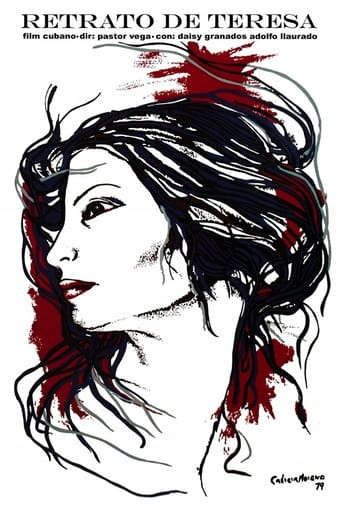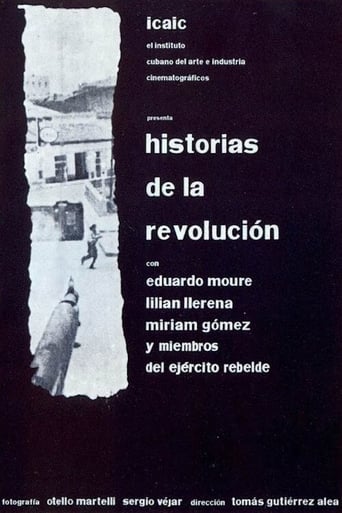
Карлос Фаріньяс
Carlos Fariñas
Дата народження: 28 листопада 1934
Знак зодіаку: Стрілець
Дата смерті: 30 червня 2002 (67 років)
Місце народження: Сьєнфуегос (Куба)
Всього фільмів (на сайті): 3
Ролі: композитор
Сюжет (англ.)
Teresa is overwhelmed: with a husband, three young sons, a job as a crew leader in a textile factory, and volunteer commitments as cultural leader of her union. Her husband, Ramón, wants ...Portrait of Teresa (1979)
Portrait of Teresa
Читати опис (англ.)
Teresa is overwhelmed: with a husband, three young sons, a job as a crew leader in a textile factory, and volunteer commitments as cultural leader of her union. Her husband, Ramón, wants ...Сюжет (англ.)
This study of Cuba--partially written by renowned poet Yevgeny Yevtushenko--captures the island just before it made the transition to a post-revolutionary society. Moving from city to country and back again, I AM CUBA examines the various problems caused by political oppression as well as by great discrepancies in wealth and power. Beginning in Havana in the pre-Castro era, we see how foreigners contributed to the city's prostitution and poverty; this sequence features dreamy, hallucinogenic camera work that creates a feeling of unease and dislocation. Then, in glorious images of palm tress and fertile land, the film looks at the sugar cane fields in the countryside, and the difficulties faced by peasants working the land. Finally, back in the city again, leftist students battle the police and a corrupt government--and pay a high price for their rebellion.I Am Cuba (1964)
I Am Cuba
Читати опис (англ.)
This study of Cuba--partially written by renowned poet Yevgeny Yevtushenko--captures the island just before it made the transition to a post-revolutionary society. Moving from city to country and back again, I AM CUBA examines the various problems caused by political oppression as well as by great discrepancies in wealth and power. Beginning in Havana in the pre-Castro era, we see how foreigners contributed to the city's prostitution and poverty; this sequence features dreamy, hallucinogenic camera work that creates a feeling of unease and dislocation. Then, in glorious images of palm tress and fertile land, the film looks at the sugar cane fields in the countryside, and the difficulties faced by peasants working the land. Finally, back in the city again, leftist students battle the police and a corrupt government--and pay a high price for their rebellion.Stories of the Revolution (1960)
Stories of the Revolution
Увійдіть, будь ласка, щоб коментувати
Фільтр








